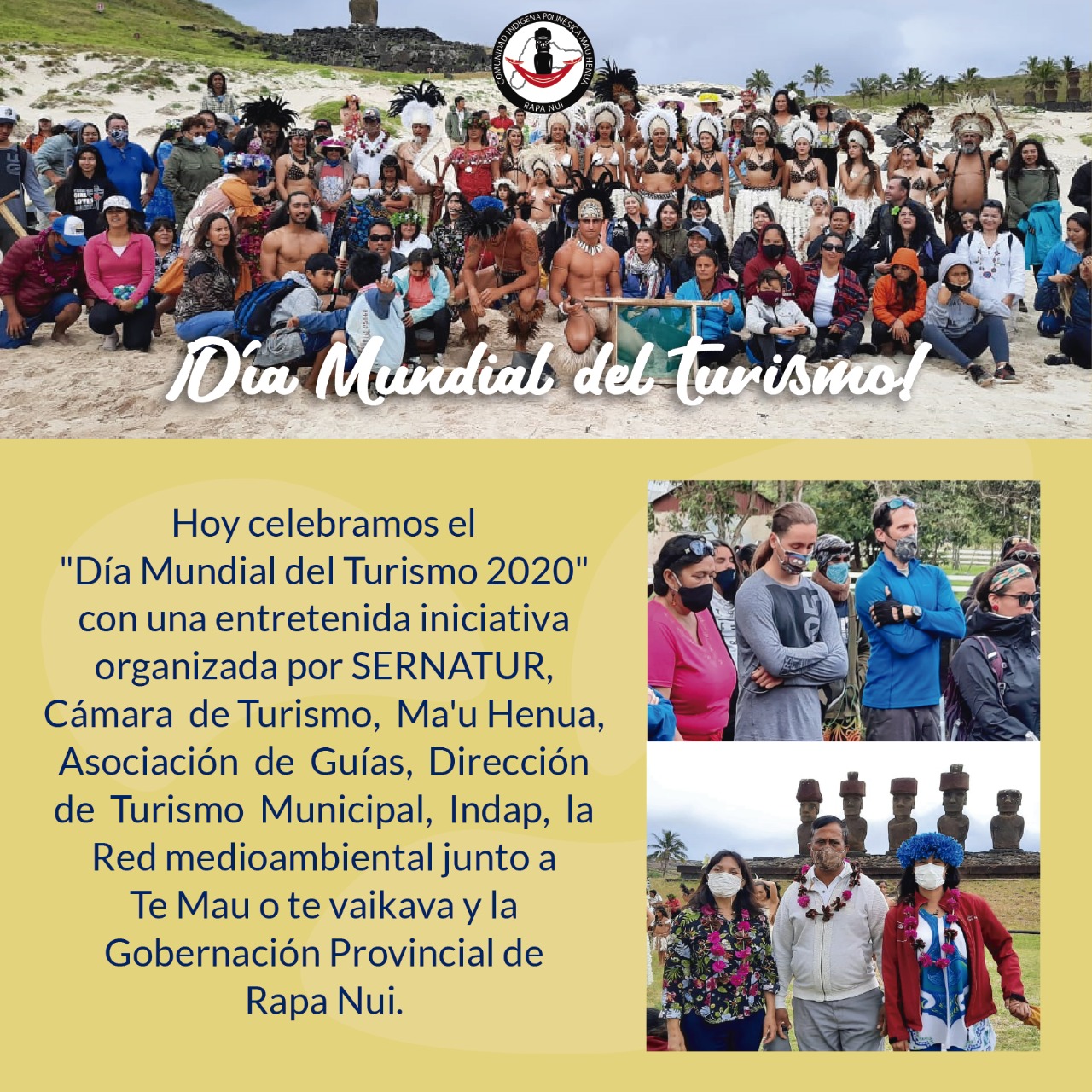

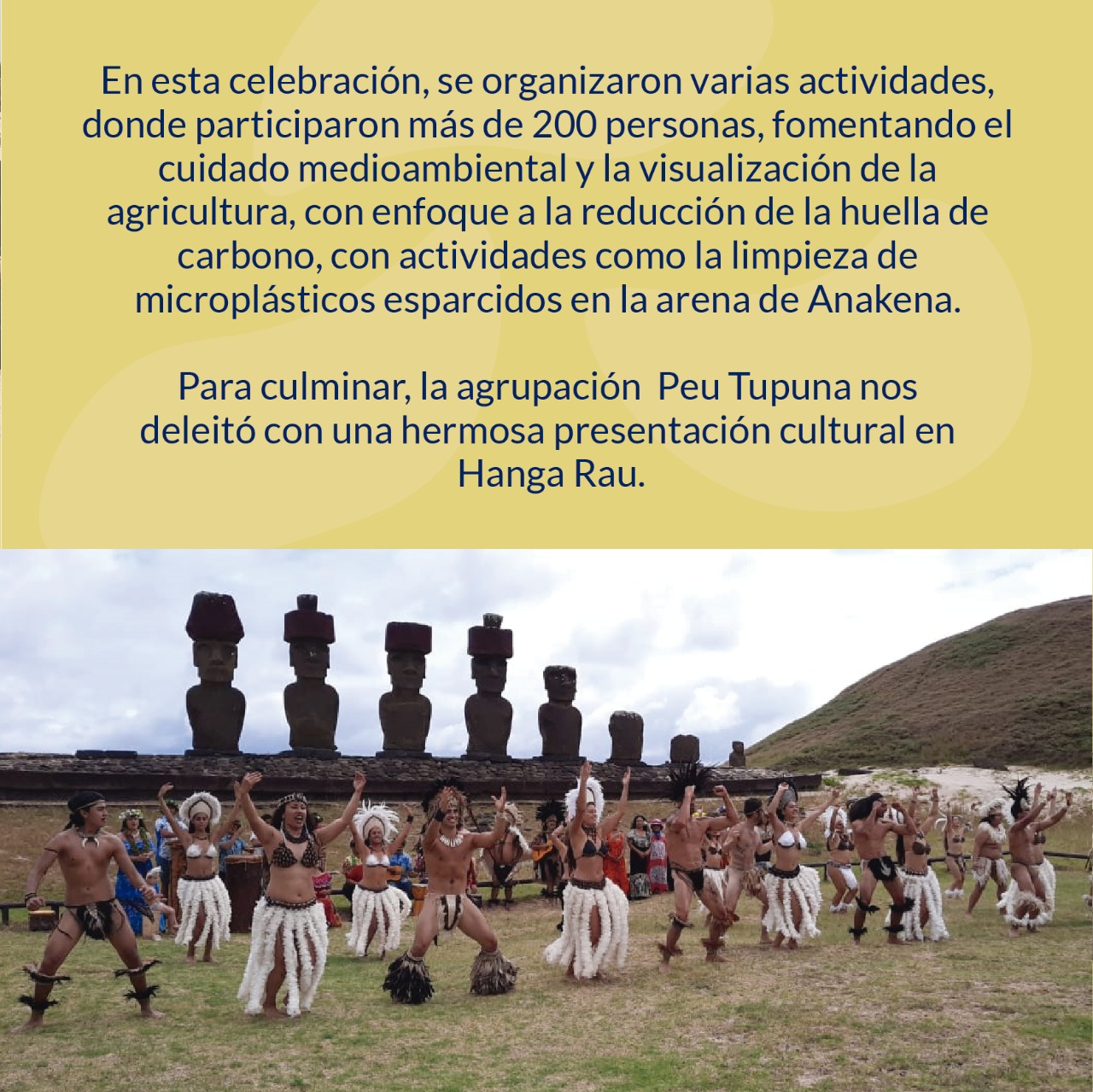
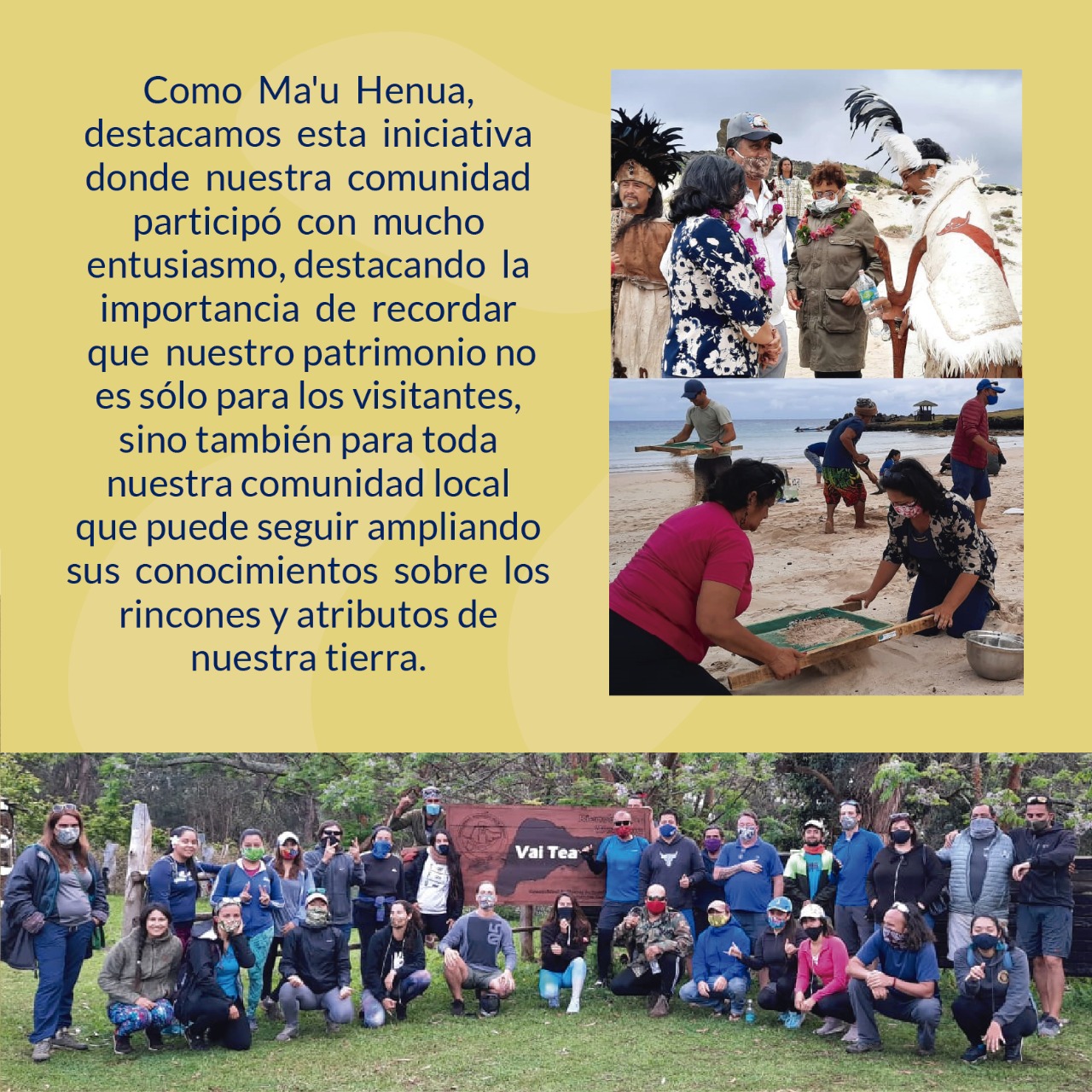
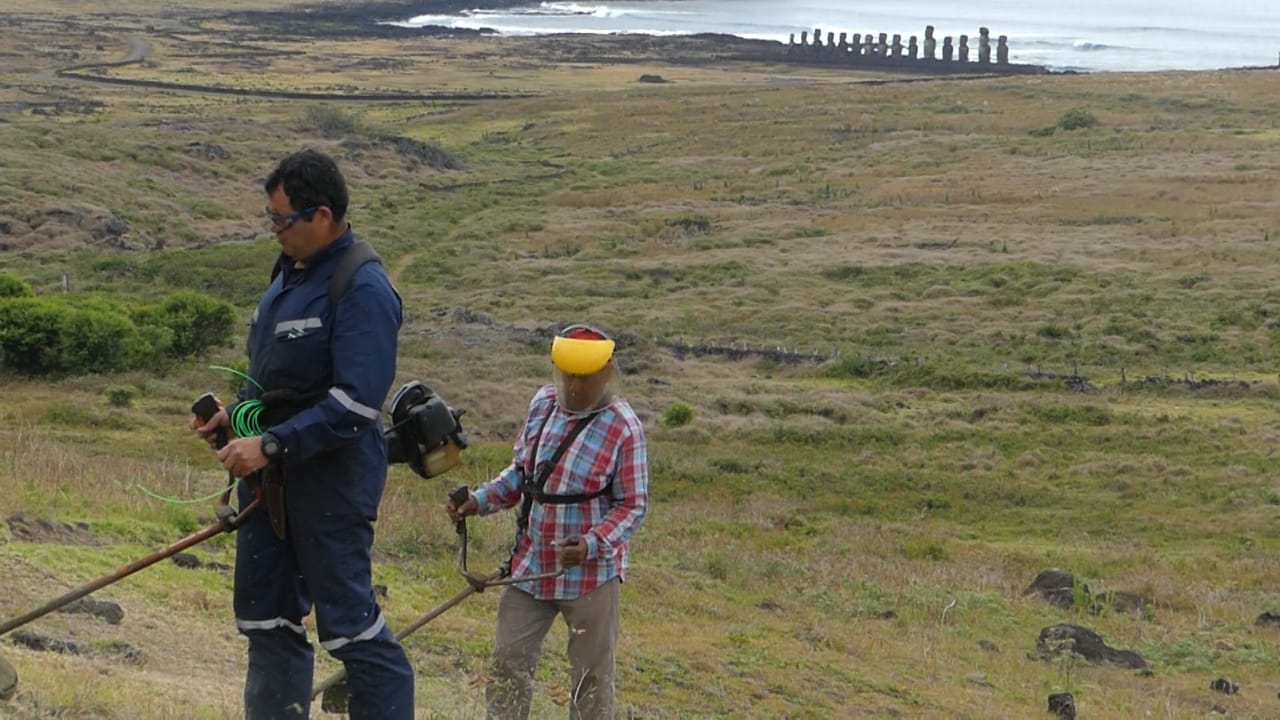

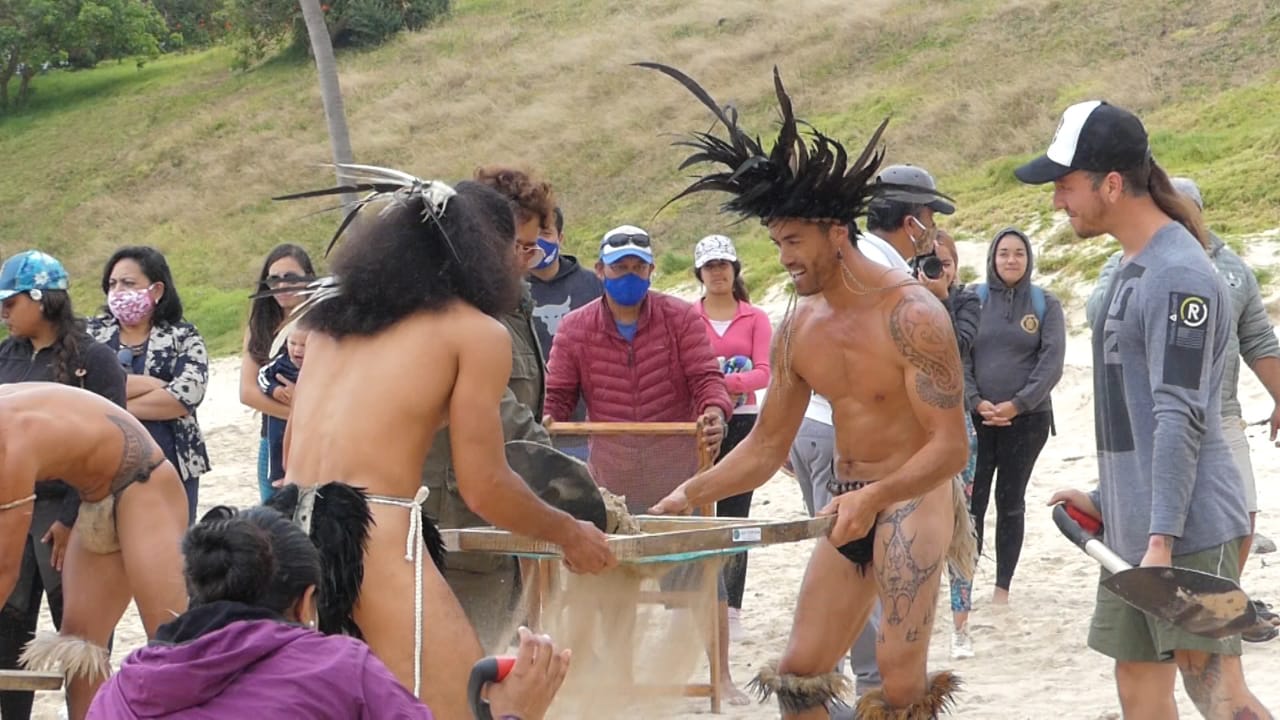
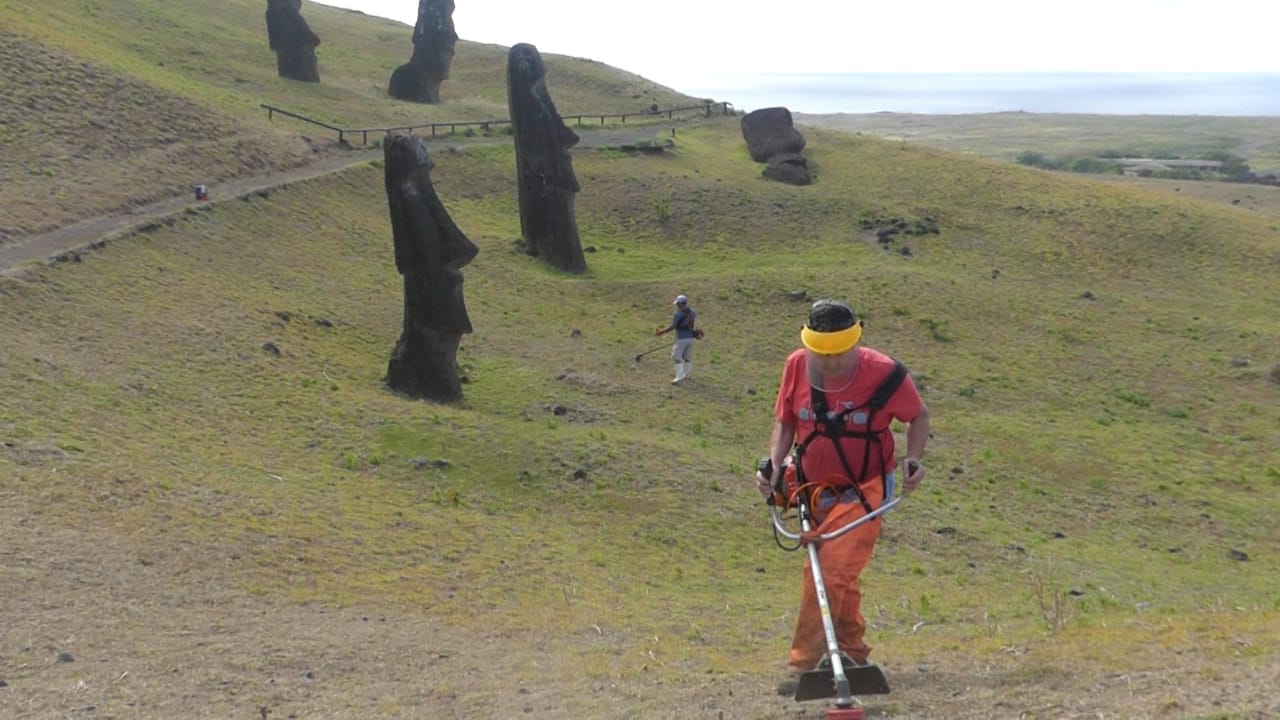
In order to be prepared for taking the responsibility of the management of the National Park, the community required to build capacities on legal, administrative and technical aspects. This approach also considered the capacity building of local park rangers, in charge of transmitting, promoting and safeguarding their heritage's cultural value. Ma’u Henua has become a space where diverse fields of technical academic specialization and local experts could develop their activities in a complementary and joint manner. This is one of the most important spaces for the application of cultural and technical methodologies that dialogue with the tangible and intangible heritage context.
- The process of institutionalization of the Indigenous institution allowed the community members to get involved and learn about administration, developing new skills and reinforcing their knowledge.
- Youth educated in the mainland was willing to engage in the management of the protected area and return to live in the island.
- Creation of opportunities in the island and national policies for community development.
- Agreement with the CONAF and the Ministry of Culture and Arts.
- Rich local knowledge among Rapa Nui community members.
(1) The island provides work opportunities on park management, tourist services, and other monitoring activities. These opportunities empower youth which recognize and learn about their culture and heritage, re-learn to appreciate it and protect it. World recognition of its value supports intergenerational transmission.
(2) Importance of involving elders to pass on knowledge to youth. Citizen participation is essential for management and there is potential of capitalization on local knowledge.
(3) Permitting the locals to engage in park ranger roles produce jobs in the island, allowing the use of the knowledge of the Rapa Nui community to communicate the values of the island and to better monitor their conservation.
(4) Establishment of culturally safe protocols and respectful alliances between the Ma’u Henua and State institutions for unifying criteria for heritage protection.
(5) Elaboration and implementation of an administrative structure that establishes procedures and protocols.